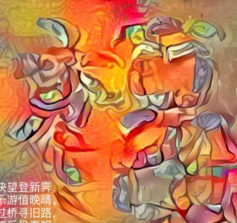The following are supplemental reference resources for the paper:
Teaching Artificial Intelligence through the Arts in Beijing
Brief Class Outline:
Class 1. We present the students with an interactive introduction to basic conceptions of intelligence, what defines artificial intelligence, and the history and background of the computers and software behind AI. For an activity, we walk students through basic installations of required softare, and run a simple program together, to demonstrate face detection. In this class we ask students to process a real and a hand-drawn face to compare and contrast how the program runs.
Class 2. In this class, we cover core A.I. concepts: training, weights, biases, graph visualization and understanding accuracy/precision and loss. We spend more time talking and working together to install some of the more in-depth software required for the class. At the end, we jointly work through several training and classification exercises using Google’s Teachable Machines online software.
Class 3. We engage students in a discussion about deep learning, different types of neural networks, and then we dive into conducting brief fine-tune training and artistic style transfer using a single image and a single artistic style influence. Students produce their own works on their desktops, and given variable training time, some students finish work after class.
Class 4. We discuss recurrent versus convolutional neural networks, and why RNN’s are best for sequential data like music, and CNN’s are better for images and art. Students use pre-trained Basic, Lookback and Attention RNN models from Tensorflow Magenta to create classical music, and then discuss which model is best and why.
Class 5. We build a basic convolutional neural network together, from selecting and optimizing data, to training a model and then deploying the model to identifying and/or classifying objects (for example flowers).
Class 6. Discussions are held about the uses of motion tracking in scientific research, self-driving vehicles, space applications and more. Students then use live, virtual motion tracking software, some requiring a trained model and some which do not, to track a ball, or their own body motion, using several different techniques to see which system yields the best results, and discuss what other techniques. The motion tracking programs used leave trails of different colors, which appear rather artistic, but are useful in tracking the path of a given object.
Class 7. We discuss the applications and uses of video manipulation in AI, including deepfakes and style transfer. We also discuss the practical uses of this technology in advanced data augmentation, to create new, artificial data, in application where the existing pool of data is sparse. Students are asked to participate in creating a video of their own using a simplified video style transfer software and basic video editing tools.
Class 8. Natural Language Processing: The Key to the Turing Test – Discussion & Demo of AI Based NLP Tech / Chatbots. Why Poetry/ Narrative AI is Hard. Discussion of practical research summarization tools like Scholarcy. Make a poem in the style of the “High Tang Dynasty Style” poetry (5 characters per line).
Class 9. Discussion, planning and establishment of teams for final student projects. We review locations where students can obtain tutorials on our internal class website, and via github, etc. Students see videos of work done by other students their age, using AI. Then they work to propose concepts and technologies for their final projects.
Class 10. Students present their final project, and Q&A in front of the entire class, and engage in a class wrap-up discussion.
Final Project Examples – Themed AI-Generated Visual Artwork, Submitted by Students:
“Our School: Beijing Academy” theme:
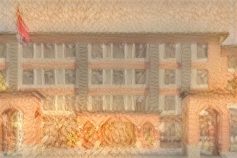
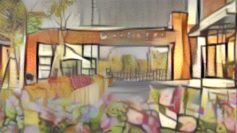
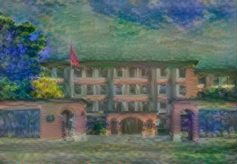
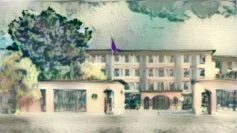
Self and family portrait theme:
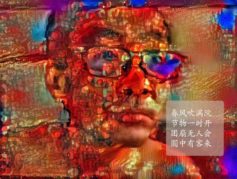
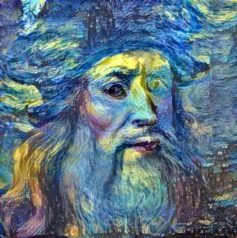
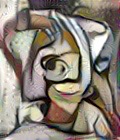
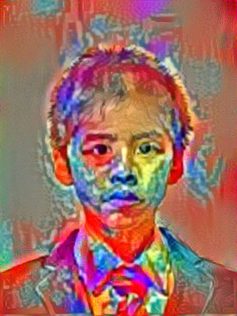
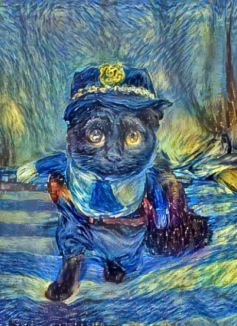
Chinese New Year theme:
